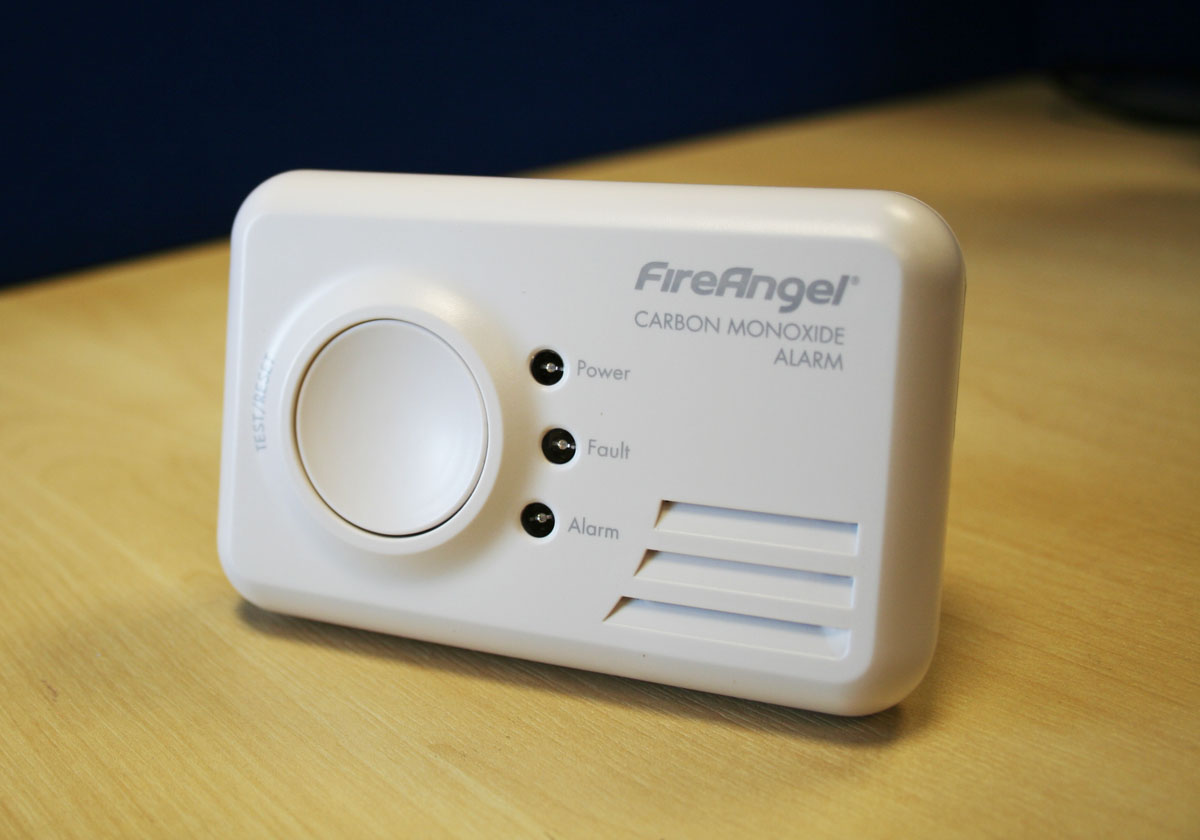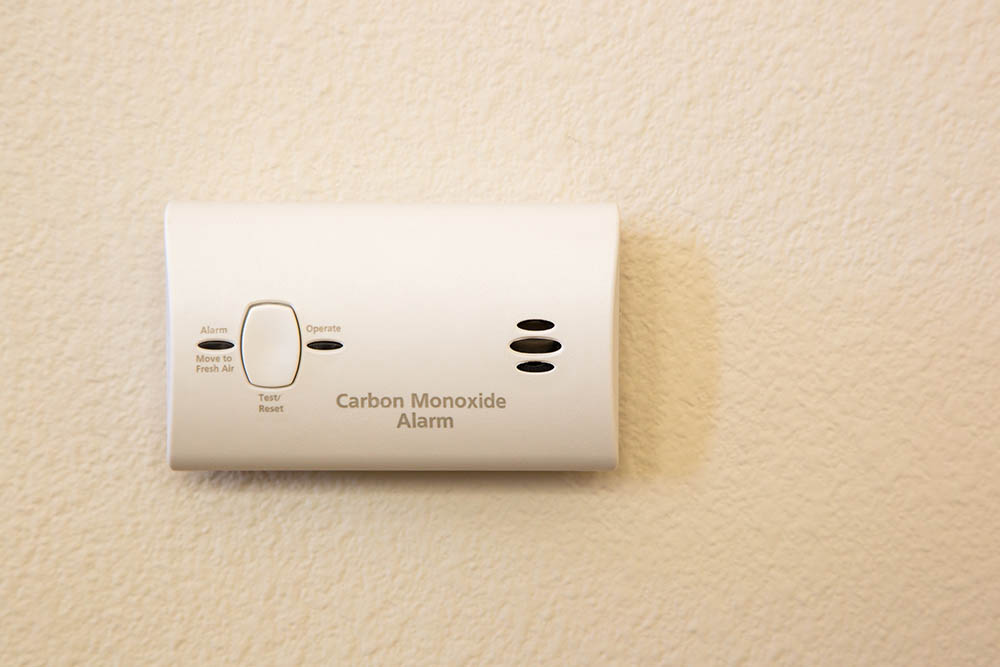When Do Carbon Monoxide Detectors Go Off

One of the most unsettling experiences for a homeowner is the shrill, persistent alarm of a carbon monoxide (CO) detector. The immediate panic is understandable – CO is a silent, odorless killer. But before you rush to evacuate, understanding why your detector is going off is crucial. Often, it's not a life-threatening situation, and taking a methodical approach can save you unnecessary stress and expense.
Understanding Carbon Monoxide Detectors
First, let's clarify what CO detectors do. They measure the concentration of carbon monoxide in the air. When this concentration reaches a certain level (measured in parts per million or ppm) for a specific period, the alarm sounds. Different detectors have different sensitivities and alarming thresholds, so consult your detector's manual for specifics.
Common Sources of Carbon Monoxide
Carbon monoxide is a byproduct of incomplete combustion. This means it's produced when fuels like natural gas, propane, oil, wood, or kerosene aren't burned completely. Common sources in homes include:
- Furnaces: A malfunctioning furnace is a prime suspect.
- Water heaters: Gas-powered water heaters can also leak CO.
- Fireplaces: Wood-burning fireplaces, especially if not properly ventilated.
- Gas stoves and ovens: Using these appliances for heating is dangerous.
- Portable generators: Never operate a generator indoors or in an attached garage.
- Vehicles: Running a car in an attached garage, even with the door open, is incredibly risky.
- Charcoal grills: Similar to generators, charcoal grills should only be used outdoors.
Troubleshooting Your Carbon Monoxide Detector
When your CO detector goes off, follow these steps carefully and calmly. Your safety is the top priority.
Step 1: Ensure Everyone's Safety
Immediately evacuate everyone from the premises – including pets. Do not hesitate. Go outside and get fresh air. Do not re-enter the building until you are certain it is safe.
Step 2: Call Emergency Services (If Needed)
If anyone is experiencing symptoms of CO poisoning (headache, dizziness, nausea, vomiting, shortness of breath, confusion, blurred vision, loss of consciousness), call 911 or your local emergency number immediately. Do not attempt to diagnose or treat the symptoms yourself.
Step 3: Investigate the Alarm
Once you're safely outside and no one is showing symptoms, you can begin to investigate (after emergency services have cleared the area if you called them). Do NOT re-enter the building without clearance if you suspect a dangerous CO level.
If emergency services have cleared the building or you are confident it is safe to briefly enter (after adequate ventilation), wear a respirator mask if available. Open all windows and doors to ventilate the house. Then, proceed with the following checks:
Check the Detector Itself
- Battery: Low batteries are a very common cause of false alarms. Replace the batteries with fresh ones. Even if the detector is hardwired, it likely has a battery backup. After replacing the battery, press the test button. If the alarm continues, move on to the next step.
- Expiration Date: CO detectors have a limited lifespan, typically 5-7 years. Check the expiration date on the detector. If it's expired, replace it immediately.
- Dust and Debris: Dust and debris can interfere with the sensor's readings. Use a vacuum cleaner with a brush attachment to gently clean the detector's surface.
- Placement: Is the detector located near a source of steam or moisture, such as a bathroom or kitchen? Humidity can trigger false alarms. Relocate the detector if necessary, following the manufacturer's instructions. Generally, CO detectors should be placed on each level of your home and near sleeping areas.
- Faulty Unit: It's possible the detector is simply malfunctioning. Try replacing it with a new one. If the new detector doesn't alarm, the old one was likely faulty.
Check Potential CO Sources
After checking the detector, investigate potential sources of CO. Use your senses – do you smell gas? (Note: CO itself is odorless). However, natural gas is often mixed with a sulfur-containing odorant to make leaks detectable. If you smell gas, evacuate immediately and call your gas company from outside the building.
- Furnace: Visually inspect the furnace. Look for signs of damage or rust. Check the flue pipe (the pipe that vents exhaust gases outside) for any disconnections or blockages. Do not attempt to repair the furnace yourself.
- Water Heater: Check the water heater for similar signs of damage and inspect the flue pipe.
- Fireplace: Ensure the damper is fully open before using the fireplace. Check for any blockages in the chimney.
- Gas Appliances: Make sure gas stoves and ovens are burning with a blue flame. A yellow or orange flame indicates incomplete combustion and potential CO production. Do not use these appliances for heating.
- Attached Garage: Ensure no vehicles are running in the attached garage. Even brief exposure to vehicle exhaust can be dangerous.
Step 4: Resetting the Detector
After addressing any potential issues and ventilating the house, reset the CO detector by pressing and holding the test/reset button for the recommended duration (usually 5-10 seconds, refer to your manual). If the alarm continues to sound, proceed to the next step.
Step 5: Monitoring
Even if the alarm stops after troubleshooting, continue to monitor the situation closely. Pay attention to any unusual smells or symptoms of CO poisoning. If you're concerned, call your local fire department or a qualified HVAC technician for a professional inspection.
When to Call a Professional
There are several situations where professional help is absolutely necessary:
- You smell gas: Evacuate immediately and call your gas company.
- Anyone is experiencing symptoms of CO poisoning: Call 911 or your local emergency number.
- The alarm continues to sound after troubleshooting: This indicates a potentially serious CO leak that needs professional attention.
- You suspect a problem with your furnace, water heater, or other gas appliance: Do not attempt to repair these appliances yourself. Contact a qualified HVAC technician.
- You are unsure of the source of the CO: A professional can use specialized equipment to detect CO levels and identify the source.
- Your CO detector is constantly alarming, even after replacing the battery and cleaning it: This could indicate a faulty detector or a persistent CO leak.
Preventing Carbon Monoxide Poisoning
Prevention is always better than cure. Here are some essential tips to prevent CO poisoning:
- Install CO detectors on every level of your home and near sleeping areas.
- Test your CO detectors monthly and replace the batteries at least twice a year (or according to the manufacturer's instructions).
- Have your furnace, water heater, and other gas appliances inspected annually by a qualified HVAC technician.
- Ensure proper ventilation when using fuel-burning appliances.
- Never use gas stoves or ovens for heating.
- Never operate a generator indoors or in an attached garage.
- Never run a car in an attached garage, even with the door open.
- Be aware of the symptoms of CO poisoning.
Understanding False Alarms
While it's crucial to take every CO alarm seriously, it's also important to understand that false alarms can happen. As mentioned earlier, low batteries, humidity, dust, and expired detectors are common culprits. Sometimes, temporary fluctuations in CO levels (e.g., from a nearby vehicle starting) can trigger a brief alarm. If you've ruled out all potential CO sources and the alarm continues to sound intermittently, it's likely a false alarm caused by a faulty detector or environmental factors. However, it's always best to err on the side of caution and investigate thoroughly.
In conclusion, a CO detector alarm is a signal to act, but not necessarily to panic. By following these steps, you can diagnose the problem, take appropriate action, and ensure the safety of yourself and your family. Remember, when in doubt, call a professional. Your health and safety are always the top priority.










